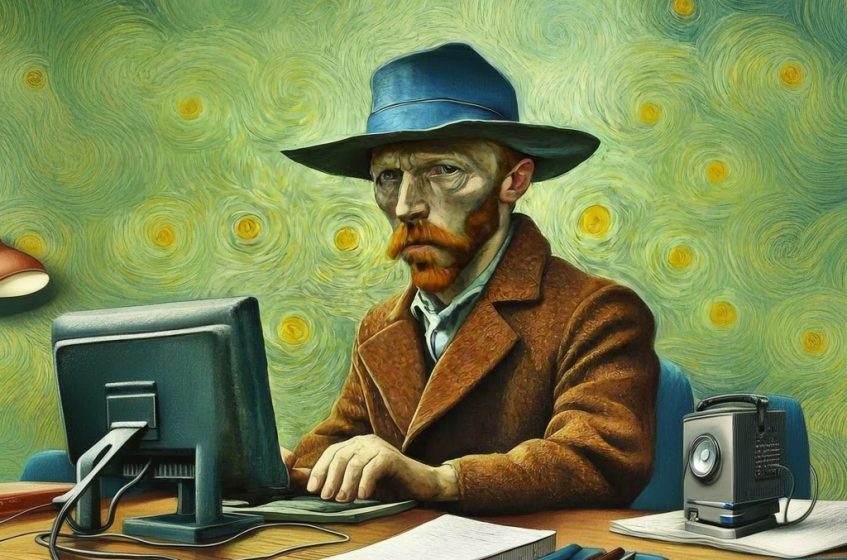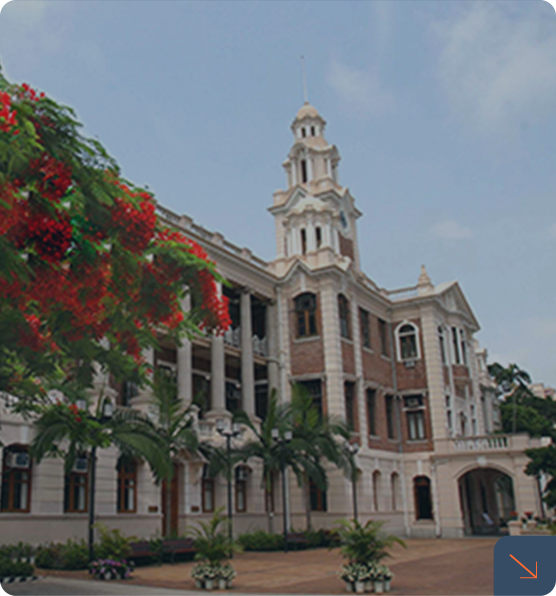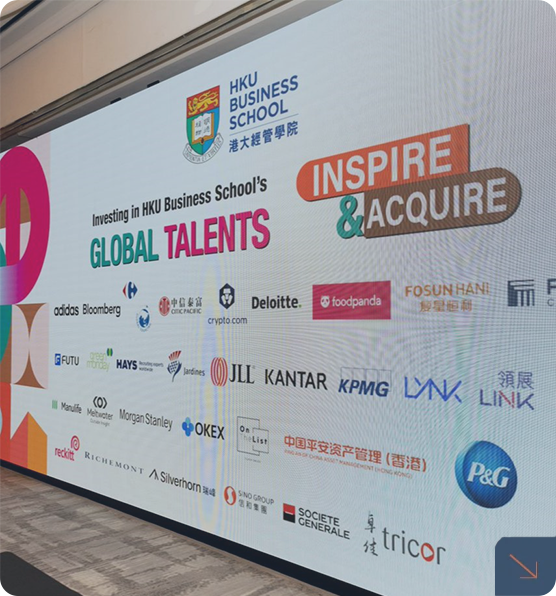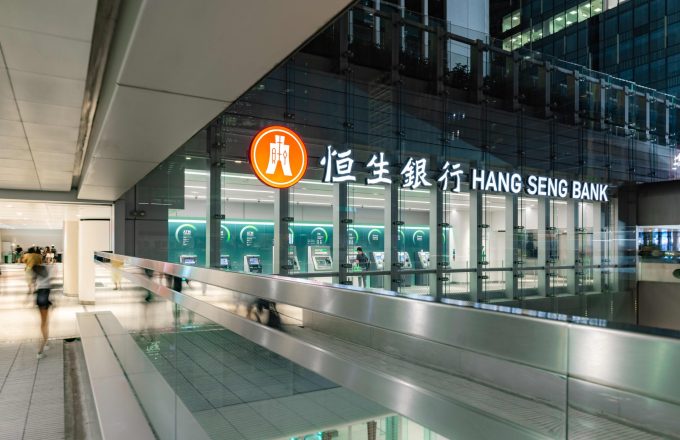
Van Gogh in the Chip: The Impact of Artificial Intelligence on Creative Processes and the Art Market
Prof. Yulin Fang, Yangchen (Kem) Mou, and Bingjie Qian
11 June 2025
Recent years have seen the explosive development of artificial intelligence (AI) technology raising heated debates and deep-seated concerns worldwide about whether AI can replace human workers and result in job destruction. Back in 2016, the late British physicist Stephen Hawking already made the prediction that “the rise of artificial intelligence is likely to extend this job destruction deep into the middle classes, with only the most caring, creative, or supervisory roles remaining” (see Note 1).
In this globally-pervasive wave of technological innovation, driven by uncompromising creative and aesthetic standards, the art sector is often regarded as the last bastion of human originality. The Hong Kong SAR Government holds the arts and creative industries in high esteem. Dedicated to promoting a vibrant art ecosystem, the authorities allocated close to $100 million in 2023 to nurture up-and-coming artistic talent and support the development of art groups. Meanwhile, in the face of emerging harsh realities, some artists reportedly bear resentment over losing job opportunities to AI.
The parameters for the discussion below define works of art created with AI drawing tools as “AI art”, and original works produced with traditional painting tools as “original human art”. So there is the firm conviction that “original human art is irreplaceable” on the one hand, contrasted with the reality that “AI art is on the rise” on the other hand. Such a cognitive conflict directly points to these core questions: How will AI reshape the creative logic of artists? With AI deeply integrated into related domains, will the market value of original human artworks be gobbled up by AI art?
Prior to exploring the impact of AI on the art industry, it is crucial to crack the “codes” of evaluating the value of artworks. While this aspect may seem full of emotional overtones, it actually harbours an undercurrent of refined logic. Classic hedonistic pricing theory reveals the core nature of artwork value—its aesthetics and level of creativity. When admiring an artwork, the aesthetic characteristics and creative traits are akin to a pebble thrown onto the surface of a lake, stirring up ripples of pleasure, satiation of curiosity, and affective resonance (see Note 2).
However, a viewer’s evaluation of an artwork’s aesthetics and creativity is often largely subjective and can hardly be standardized. Hence the creator’s reputation widely acknowledged by the general public becomes the key metric for the artwork’s value. Even those who do not experience an emotional connection to Picasso’s abstract art will not deny the artistic value of his works. The standing and influence of an artist within their field provides the anchor for consensus on the value of artworks.
Overall, an artwork’s aesthetics and creativity, combined with the artist’s cachet collectively constitute the core elements that determine its market value. On this basis, how may AI technology intervene in the artistic creative process across these three dimensions? What effects might be generated on the value presentation of original human artworks?
The relationship between AI and artistic creation is now food for thought within the industry. To the supporters, AI drawing tools can, in accordance with users’ directives, integrate techniques and concepts from various art schools to provide diverse inspirations for artistic creation. A case study of New York University shows that interaction with AI tools offers an artist significant inspiration to push the boundaries of her imagination. In addition to gaining new perspectives that facilitate stylistic breakthroughs, the artist enhances her aesthetic literacy and creativity throughout the process (see Note 3).
Moreover, “AI artist” is becoming a symbol for pioneers in the industry. Amidst the upsurge in the popularity of AI technology , artists who experiment with AI-assisted creation are more likely to attract public and media attention. Such exposure could serve to enhance the artists’ personal fame, providing them with a better chance to magnify their differentiated effects within the art ecosystem.
On the contrary, those in opposition have concerns. As indicated by a research study of the University of Toronto in Canada, long-term reliance on AI tools may undermine independent creative performance and lead to the homogenization of thinking (see Note 4). This suggests that excessive reliance might negatively affect the individual abilities of artists. Copyright and moral issues have also become prominent. A group of acclaimed artists have jointly filed a lawsuit against suppliers of AI drawing tools, accusing them of abusing relevant works for AI training purposes and infringing on copyright. As a result, even artists who use AI drawing tools risk having their reputations tarnished.
So far, while the impact of AI on artists’ aesthetic vision, creativity, and professional reputation is still a moot point, controversial issues of this subject remain to be explored through empirical data.
In recent years, the burgeoning digital art trading platforms have made it possible for artists to sell electronic artworks for customers to download and interact with potential clients within the community. A leading trading platform mandates that artists disclose whether their artworks are generated by AI. This measure not only sets a distinction between “AI art” and “original human art”, but also enables researchers to monitor the market performance of these two categories of works.
Our research team has conducted a comprehensive and systematic analysis of the trading records for 415,906 paintings by 3,355 artists on a prominent digital art trading platform. The study sample specifically examines original human artworks, independently created by the artists, showcasing their inherent artistic and innovative abilities. In the process of the analysis, state-of-the-art algorithms across various aspects are utilized: using BAID algorithm based on machine vision to evaluate the aesthetic quality of the artworks, and DINOv2 algorithm by Meta AI to extract image features. Coupled with the rolling cosine distance algorithm, these tools assess the innovativeness of artists in their original human creations. Besides, the number of medals awarded by art admirers is included to reflect changes in each artist’s reputation.
The study findings indicate that art creators who attempt to use AI exhibit upward trends in aesthetic literacy, creative abilities, and personal reputation. Subsequent to their interaction with AI drawing tools, their eventual original human works not only show significant improvements in ratings across both aesthetic and creative dimensions but also register growth in price, sales, and profit. This research result supports the positive hypothesis that AI most probably does not pose a threat to the traditional art market. On the contrary, it is conducive to expanding the value scope of original human artworks by empowering the artists.
Our research findings illustrate that AI is probably not the terminator of original human artworks but may well be playing the role of empowerer, opening fresh opportunities for artists who willingly embrace AI. In the long run, if used rationally as a source of inspiration and skill enhancement, AI tools may become crucial for maintaining artists’ competitiveness.
Eyeing the huge potential of AI technology and positioning itself at the forefront of artistic and technological innovation in Asia, the Hong Kong SAR Government is actively investing in the development of AI within the creative industry and establishing a risk prevention and control system. The Hong Kong Generative AI Research and Development Centre (HKGAI) has launched its HKGAI V1 large language model, equipped with multimedia generative capabilities including text, graphics, voice, and video, to provide powerful creative assistance for industry applications. The Digital Policy Office has also released the Hong Kong Generative Artificial Intelligence Technical and Application Guideline, addressing critical issues such as copyright and ethics to lay a solid compliance foundation for the stable development of the AI-creative industry.
Looking ahead, arts and culture industries are poised to enter a brand-new era of deep integration between human creativity and AI. Through the constant interplay of technology and art, artistic boundaries will be continually redefined, giving rise to novel aesthetic paradigms and a widening variety of creative forms. Hopefully, this will bring more delightful surprises and heartfelt moments to culture and art enthusiasts around the world.
Note 2: Hernando, E., & Campo, S. (2017). “Does the Artist’s Name Influence the Perceived Value of an Art Work?” International Journal of Arts Management 19(2): 46–58.







